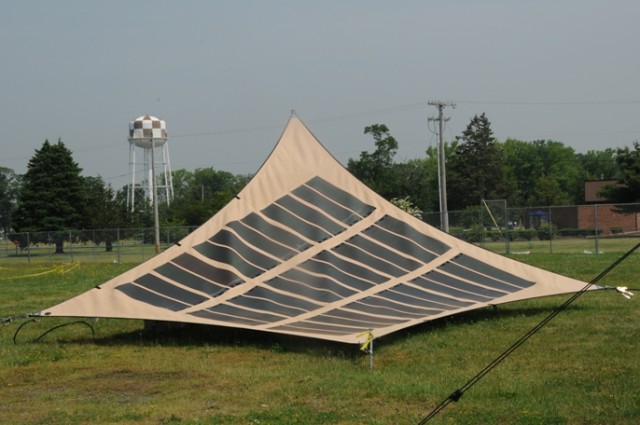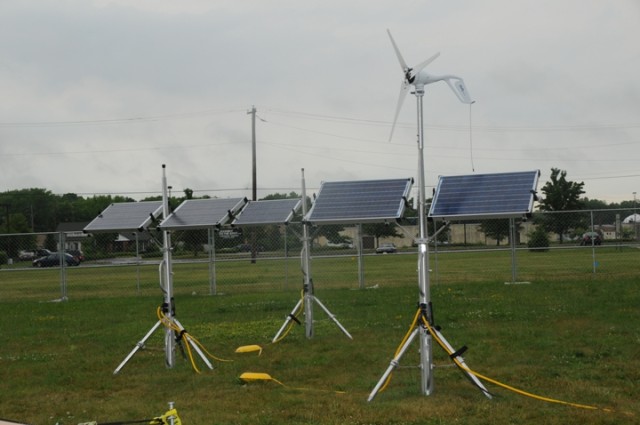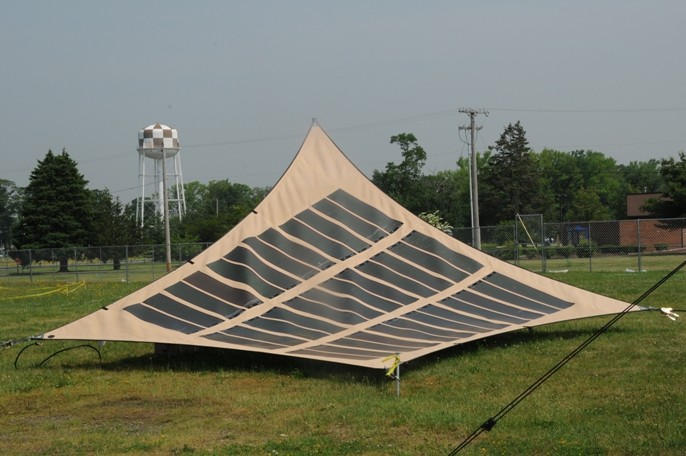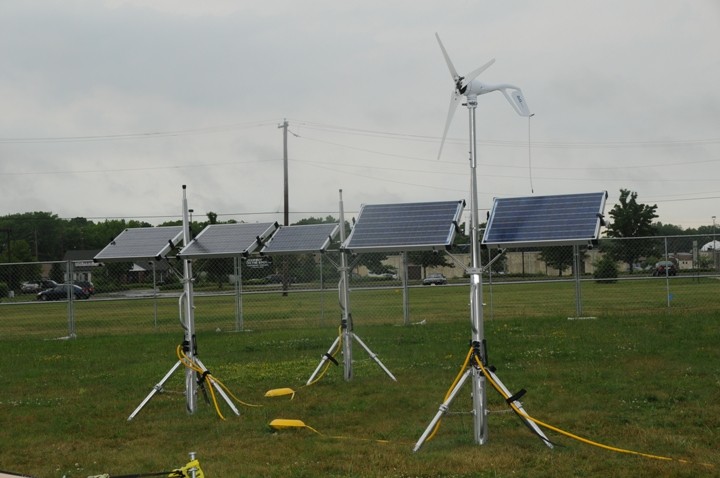FORT MONMOUTH, N.J. -- A report coinciding with President Barack Obama's first radio address in January indicated that his administration has set a goal of doubling the domestic renewable energy-generating capacity over the next three years.
For one segment within the Department of Defense (DoD), less dependence on fossil fuels has been an ongoing goal for reasons related to both financial costs and human lives.
The military has placed a great deal of emphasis on examining energy usage in both Iraq and Afghanistan due to the recent surge in fuel prices and the nature of some casualties in theater, said Paul Richard, deputy DoD project manager for Mobile Electric Power (MEP).
"Casualties are being taken in supply convoys of Soldiers bringing fuel to the battlefield who are getting hit by improvised explosive devices (IEDs)," Richard said. "How do you minimize the risks to Soldiers getting hit by IEDs' You shrink the supply convoys. How do you do that' You shrink the amount of fuel being carted out to the battlefield."
Since generators have been identified as the single largest consumer of fuel on the battlefield during wartime, the Army has shown a sizable interest in reducing the amount of fuel transported for generators, he said.
The result is the present push for renewable energies. "Green" technology emits a minuscule amount or even no carbon. Project Manager, Mobile Electric Power displayed some of its "Green" Command Post (CP) technologies at the Joint Users' Interoperability Communications Exercise (JUICE) 2009 held during most of June at Fort Monmouth, N.J.
There, a Global Rapid Response Information Package (GRRIP) system operated nearly 100 percent of the time from a solar power system provided by Solar Stik. The GRRIP is a fully deployable communications center, tailored around a secure satellite network.
The Solar Stik is a tripod system with a pair of 50 watt rigid-panel solar arrays that capture solar energy. The tripod can also be outfitted with an optional wind turbine that's capable of producing up to an additional 200 watts of power.
Renewable energy technologies, which sat inside and surrounded the "Green" CP, are being examined by PM MEP as future options for powering the battlefield. The "Green" CP has not been tested in actual battlefield terrains similar to those of Iraq and Afghanistan or during an actual unit's pre-deployment rotation at a combat training center.
Today, solar energy is only used to charge batteries on the battlefield. So far, tests have shown that renewable energy is most useful for smaller power levels of up to about three kilowatts, Richard said. "For small power applications if you have access to the sunlight, the terrain isn't so much of an issue, as long as you have enough (sunlight)," Richard said. "If you want to try to go for large power applications, then you may need a football-field-sized piece of land to be able to set up enough solar panels to generate the larger power output."
This doesn't negate "green" power's suitability for the battlefield. But it needs to be applied in niche applications where the amount of power required and the available terrain and climatic conditions are suitable for the use of renewable energies such as solar power.
PM MEP is partaking in studies with the National Renewable Energy Lab in Denver, Colo., to identify cases in which solar, wind or other renewable energy technologies might be advantageous.
The solar and wind power data that PM MEP captured and logged at JUICE will be used with data modeling research from the National Renewable Energy Laboratory. This will determine the tactical battlefield applications best suited for solar technology and reducing fuel costs, Richard said.
Also on display was a Base-X tent with flexible solar panels incorporated onto its roof. These panels can produce 1,200 watts of power at peak conditions. A "tent fly" structure with solar panels was also showcased. This can be draped over an existing structure or ground vehicle.
Another display was the Solar Power Mod system, similar to a sail from a sailboat that is staked into the ground. It also uses flexible solar panel technology similar to the Base-X tent's roof and is rated for 750 watts of power at peak conditions.
PM MEP is a Department of Defense Project Management Office assigned to the Army's Program Executive Office for Command, Control and Communications-Tactical (PEO C3T). GRIPP is assigned to the PEO C3T Special Projects Office.




Social Sharing